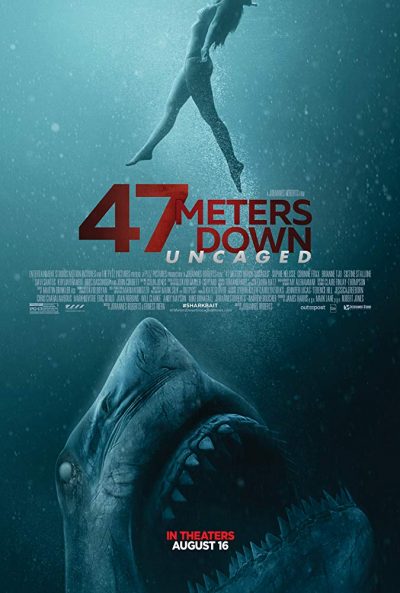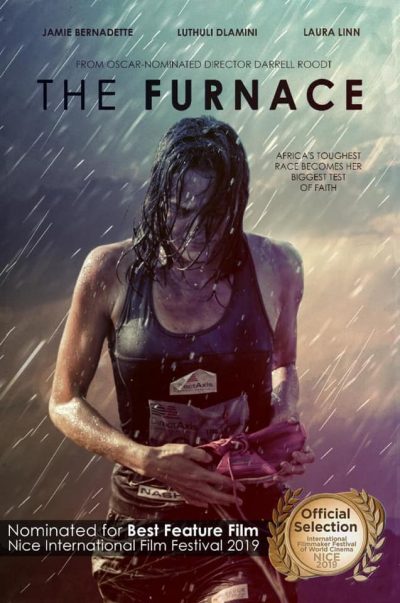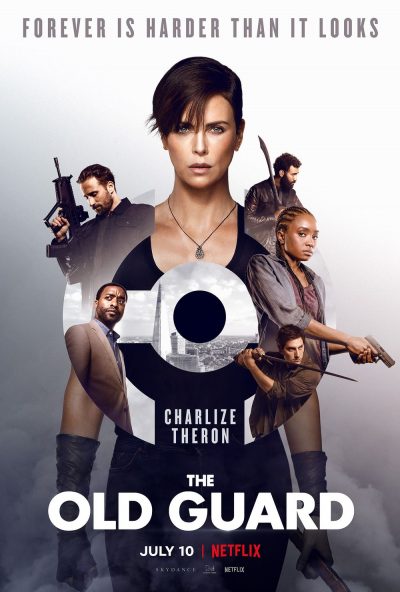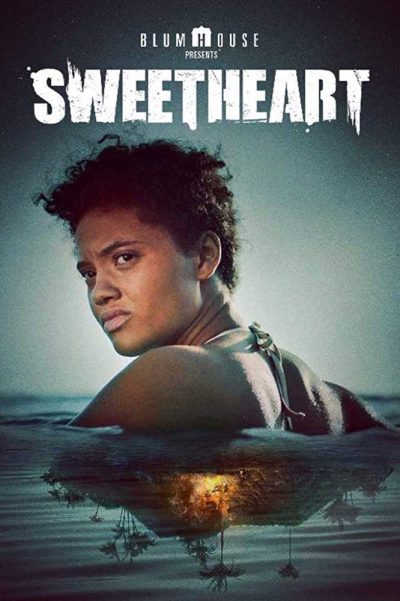Literary rating: ★★★★½
Kick-butt quotient: ☆☆☆☆

 Goodreads author Liane Zane is a published novelist under her real name, but has adopted this pen name for her new venture into paranormal romance, beginning with this opener for a projected series. She and I are Goodreads friends, so I accepted her offer of a free review copy, with no guarantee of a favorable one. PNR as such isn’t typically my thing (nor is “romance” in general, in the book trade sense); but both supernatural fiction and action adventure are, and I could easily approach this book in those terms. I’m also a sucker for a well-drawn action heroine who kicks butt and takes names –and here we have not just one but three such ladies.
Goodreads author Liane Zane is a published novelist under her real name, but has adopted this pen name for her new venture into paranormal romance, beginning with this opener for a projected series. She and I are Goodreads friends, so I accepted her offer of a free review copy, with no guarantee of a favorable one. PNR as such isn’t typically my thing (nor is “romance” in general, in the book trade sense); but both supernatural fiction and action adventure are, and I could easily approach this book in those terms. I’m also a sucker for a well-drawn action heroine who kicks butt and takes names –and here we have not just one but three such ladies.
Genesis, the first book of the Old Testament, referring to the time before Noah’s flood, states, “The Nephilim were on the earth in those days –and also afterward– when the sons of God went to the daughters of men and had children by them. They were the heroes of old, men of renown” (6:4). Biblical scholars are not agreed on exactly what the writer meant by this; but one ancient interpretation, articulated for instance in the inter-testamental Book of Enoch {which is not actually by Enoch], held that it refers to matings of rebellious angels and humans, with resulting offspring. Personally, I’m skeptical of that interpretation, but I can accept it as a fictional conceit in a novel; and it’s used as such in a number of modern novels, usually (as here) with the idea that these mixed bloodlines survived to the present day. Zane terms the descendants of these pairings the “Elioud;” her premise is that they may or may not know of their heritage and may have different amounts of angelic genes, but they inherit certain physical/mental powers, to the degree of angelic ancestry they have. Like angels and other humans, they also have free will; those who know their ancestry may ally themselves with God’s cause –or with the Adversary.
This information is the backdrop context for this novel; it’s disclosed more gradually in the book, but IMO it’s not a spoiler, and is actually helpful for the reader to know from the get-go. That understood, our setting is present-day central and eastern Europe, initially Vienna. Protagonist Olivia Markham is a young (I think her age is said to be 24) but very capable CIA agent stationed there, under the cover of graduate study and internship in international business development. But unknown to the Company, she has a side hobby: by night, she sometimes dons a Harlequin mask to take on sexual predators/rapists who use the Internet to line up victims; and she has a couple of female friends (also with backgrounds in covert intelligence) who help her.
Her latest target is a slime-ball who calls himself Asmodeus, the name of a demon in the Book of Tobit from the Apocrypha. What she doesn’t know, however, is that Asmodeus just might be his real name, and that he’s heading up a murderous cult who call themselves bogomili after a medieval Gnostic sect. (The Bogomils were an actual sect which originated in the Balkans, and which I’d read of before in various places, but the medieval Bogomils weren’t into murdering people to “liberate” their souls.) She also doesn’t know that he has another adversary watching him, a wealthy Albanian named Mihail Kastrioti, who has some friends of his own, friends who call him a drangue, which is usually translated as “dragon” in English. A drangue is a being known in actual Albanian folklore, but the concept is really pre-Christian and Zane has reinterpreted it somewhat. The plot takes off from there; and it’ll be quite a ride!
At 517 pages, this is a thick, substantial novel, but it doesn’t feel padded in the least; it flows quickly, with steady development of events, no dull moments, and a lot of action. In between, our heroines and heroes may stop to regroup and compare notes, and Zane may use the interludes to develop characters and impart information; but they’re interesting characters and information which are well worth developing and imparting, and which enhance the story. Characterization here is very adept and three-dimensional, and definitely a strong point. It’s obvious that the author also has done a lot of background research into history, Balkan culture and language (foreign-language phrases are translated for the reader where they need to be) etc.; it shows, but in a good way that masterfully evokes the setting as a seamless part of the narrative, not in the form of info-dumps or displays of erudition. She clearly has a particularly good grasp of the physical geography of Vienna and other cities where events take place. Action scenes are handled realistically and well. There’s a high body count, but no wallowing in gore for its own sake. As a whole, the story is a page-turner with a high tension and suspense factor, especially near the end.
While this is not “Christian fiction” in the commercial sense – it has a small amount of occasional profanity and obscenity, within the bounds of reasonable realism for the characters speaking – it is fiction written by a Christian. We get a picture of angels and demons, and their interaction, here which is morally and theologically consistent with what we’re told in the Bible, not a drastic reinterpretation of it in the manner of some modern writers. We’re solidly in the realm of a serious, high-stakes conflict between clearly defined good and evil, which grounds the novel and gives it substance. There’s no illicit or explicit sexual activity as such, though readers should be warned that there is one scene that could be described as “steamy”. There’s a clear closure to the immediate story arc with no cliffhanger, while the stage is clearly set for the projected sequel, which I want to read!
IMO, Olivia’s vigilante activities are unrealistic for a CIA operative. They’d be far too risky in terms of possible exposure and unwanted publicity: the Harlequin mask would hide her face, but still draw attention, and the consequences of her bosses’ wrath if they found out about it too drastic to risk. It’s also likely that the CIA’s recruiting process would have included psychological profiling which would have red-flagged vigilante tendencies; and there’s also the problem of what to do with offenders if she did catch them –just beat them up? Lethal force isn’t her default option –though she’s not squeamish about using it when she needs to– and she can’t make a citizen’s arrest and turn them in at the police station. The entire plot here unfolds in less than a fortnight, so there’s an insta-love situation with the attendant credibility challenge. If the angels mating with humans before the Flood were said to be disobedient, it renders it dubious to have similar unions going on in post-medieval times, between humans and angels in good standing. And one key aspect of the way a demon-acolyte bond magically works was a bit murky, at least to me. That kept my literary rating from a full five stars this time; but this is nonetheless a very good novel, and highly recommended!
The four-star kick-butt quotient here, for action-heroine action, draws on the activities of all three of our female spies/vigilantes. Olivia contributes her share to the body count I mentioned; but her two friends and sidekicks ably shoulder some serious action as well. My guess is that each of them are very likely to serve as protagonists in their own books in the series, which will make it at least a trilogy!
Author: Liane Zane
Publisher: Self-published; available through Amazon, both for Kindle and as a printed book.
A version of this review previously appeared on Goodreads.





 This strange little film probably makes more sense if you’ve seen The Woman, in which a feral cannibalistic woman, played by McIntosh, was captured and kept in the basement of a dysfunctional family. While this features McIntosh in the same role, it does work as a standalone film: its predecessor may help explain some of the background. Here, the woman drops off her equally uncivilized teenage daughter (Canny) at a hospital. Unsure of quite how such an unusual child should be handled, Darlin’ – called that, because of a bracelet spelling that out which she is wearing – is handed over to the Catholic church.
This strange little film probably makes more sense if you’ve seen The Woman, in which a feral cannibalistic woman, played by McIntosh, was captured and kept in the basement of a dysfunctional family. While this features McIntosh in the same role, it does work as a standalone film: its predecessor may help explain some of the background. Here, the woman drops off her equally uncivilized teenage daughter (Canny) at a hospital. Unsure of quite how such an unusual child should be handled, Darlin’ – called that, because of a bracelet spelling that out which she is wearing – is handed over to the Catholic church. Even if the film doesn’t quite live up to the title and poster, it turned out to be better than I expected… from the title and poster, to be honest. It has been my experience that, the more lurid the advertising, the more disappointed I’m likely to be. Films like this often don’t just fail to deliver on what they promise, they also struggle with basic aspects of film-making, like plot and characterization, providing a double-whammy of failure. While the former is true here (no-one, at any point, is
Even if the film doesn’t quite live up to the title and poster, it turned out to be better than I expected… from the title and poster, to be honest. It has been my experience that, the more lurid the advertising, the more disappointed I’m likely to be. Films like this often don’t just fail to deliver on what they promise, they also struggle with basic aspects of film-making, like plot and characterization, providing a double-whammy of failure. While the former is true here (no-one, at any point, is  History is largely filled with people being unpleasant to each other, usually for belonging to a different race, religion, nationality or even species [if you want to go back to the Cro-Magnons pushing out the Neanderthals about 40,000 years ago]. It’s sad and unfortunate, but it’s not something for which I feel personal responsibility – not least because it tends to work in both directions. My ancestors may have been part of the British Empire who, for example, invented the concentration camp in the Boer War. But my ancestors were also subject to the ethnic cleansing of the Highland Clearances, forced out to make way for sheep. Attempts to make me feel guilty for the sins of my forefathers are thus largely doomed to fail.
History is largely filled with people being unpleasant to each other, usually for belonging to a different race, religion, nationality or even species [if you want to go back to the Cro-Magnons pushing out the Neanderthals about 40,000 years ago]. It’s sad and unfortunate, but it’s not something for which I feel personal responsibility – not least because it tends to work in both directions. My ancestors may have been part of the British Empire who, for example, invented the concentration camp in the Boer War. But my ancestors were also subject to the ethnic cleansing of the Highland Clearances, forced out to make way for sheep. Attempts to make me feel guilty for the sins of my forefathers are thus largely doomed to fail. ★★
★★ Director Roberts returns for a sequel to
Director Roberts returns for a sequel to  In the 1880’s, the town of Butte, Montana is a mining boom-town – instead of gold, it’s mostly copper which fuels its economy. The wealth comes at a cost, as the huge amounts of acrid smoke belched from the smelters and plants turns day into night, along with creating perpetually “noxious, disgusting air.” Off the train and into this smog steps Cat, a woman with no shortage of a past. A former prostitute, but also a ranch-hand, her preferred outfit of blue jeans and six-shooter is most atypical for a woman of the times. Almost immediately, she is drawn into the mysterious and suspicious death on the street of another “fallen woman,” Norma. The apparent cover-up goes right up to “Copper Kings” such as Marcus Daly (a real tycoon from that time and place), and it quickly becomes clear that whoever was behind Norma’s demise, is none to happy to find Cat looking into the matter. To find the truth, she’s going to have to navigate her way through both ends of Butte society.
In the 1880’s, the town of Butte, Montana is a mining boom-town – instead of gold, it’s mostly copper which fuels its economy. The wealth comes at a cost, as the huge amounts of acrid smoke belched from the smelters and plants turns day into night, along with creating perpetually “noxious, disgusting air.” Off the train and into this smog steps Cat, a woman with no shortage of a past. A former prostitute, but also a ranch-hand, her preferred outfit of blue jeans and six-shooter is most atypical for a woman of the times. Almost immediately, she is drawn into the mysterious and suspicious death on the street of another “fallen woman,” Norma. The apparent cover-up goes right up to “Copper Kings” such as Marcus Daly (a real tycoon from that time and place), and it quickly becomes clear that whoever was behind Norma’s demise, is none to happy to find Cat looking into the matter. To find the truth, she’s going to have to navigate her way through both ends of Butte society. Two days after getting married, Mary Harris (Bernadette) is involved in a car accident which kills her new husband and leaves her barely able to walk. But she has one goal: to compete in the Furnace, an ultra-marathon race through the African wilderness, in which she and her late husband had been planning to take part. This aim goes strongly against the desires of her mother, but Mary won’t be deterred. With the help of her mentor (Dlamini, looking like a younger version of Morgan Freeman), nicknamed “Coffin” due to his day-job as a gravedigger, she claws her way back to fitness, and to the start-line. But is she prepared for everything the environment can throw at her, and make it to the finish? To do so, she’ll have to overcome not just the lethal heat, but also predators for whom she’d be a tasty snack, and poisonous scorpions whose venom induces disorienting hallucinations.
Two days after getting married, Mary Harris (Bernadette) is involved in a car accident which kills her new husband and leaves her barely able to walk. But she has one goal: to compete in the Furnace, an ultra-marathon race through the African wilderness, in which she and her late husband had been planning to take part. This aim goes strongly against the desires of her mother, but Mary won’t be deterred. With the help of her mentor (Dlamini, looking like a younger version of Morgan Freeman), nicknamed “Coffin” due to his day-job as a gravedigger, she claws her way back to fitness, and to the start-line. But is she prepared for everything the environment can throw at her, and make it to the finish? To do so, she’ll have to overcome not just the lethal heat, but also predators for whom she’d be a tasty snack, and poisonous scorpions whose venom induces disorienting hallucinations. While a serviceable entry in the beloved genre of “Charlize Theron kicks ass”, this does have to be classed as disappointing in comparison to the epic awesomeness which were
While a serviceable entry in the beloved genre of “Charlize Theron kicks ass”, this does have to be classed as disappointing in comparison to the epic awesomeness which were  After a boat-wreck, Jennifer Remming (Clemons) washes ashore on a deserted tropical island, and has to make do with what she can find and forage. While there are no other people on the island, she’s not alone. It becomes increasingly clear that a “something” is predating for food at night there. She eventually finds out what it is: a large, amphibious and very hungry creature, walking on two legs, and capable of dragging its prey back into its lair beneath the water. Needless to say, she’s delighted when two other survivors wash up in a lifeboat: her boyfriend Lucas (Cohen) and friend Mia (Mangan-Lawrence). But convincing them of the threat, and the need to get off the island immediately, is a little tricky, because it turns out Jennifer has a little history of making things up. However, “being eaten” turns out to be fairly convincing proof, as evidence goes…
After a boat-wreck, Jennifer Remming (Clemons) washes ashore on a deserted tropical island, and has to make do with what she can find and forage. While there are no other people on the island, she’s not alone. It becomes increasingly clear that a “something” is predating for food at night there. She eventually finds out what it is: a large, amphibious and very hungry creature, walking on two legs, and capable of dragging its prey back into its lair beneath the water. Needless to say, she’s delighted when two other survivors wash up in a lifeboat: her boyfriend Lucas (Cohen) and friend Mia (Mangan-Lawrence). But convincing them of the threat, and the need to get off the island immediately, is a little tricky, because it turns out Jennifer has a little history of making things up. However, “being eaten” turns out to be fairly convincing proof, as evidence goes…